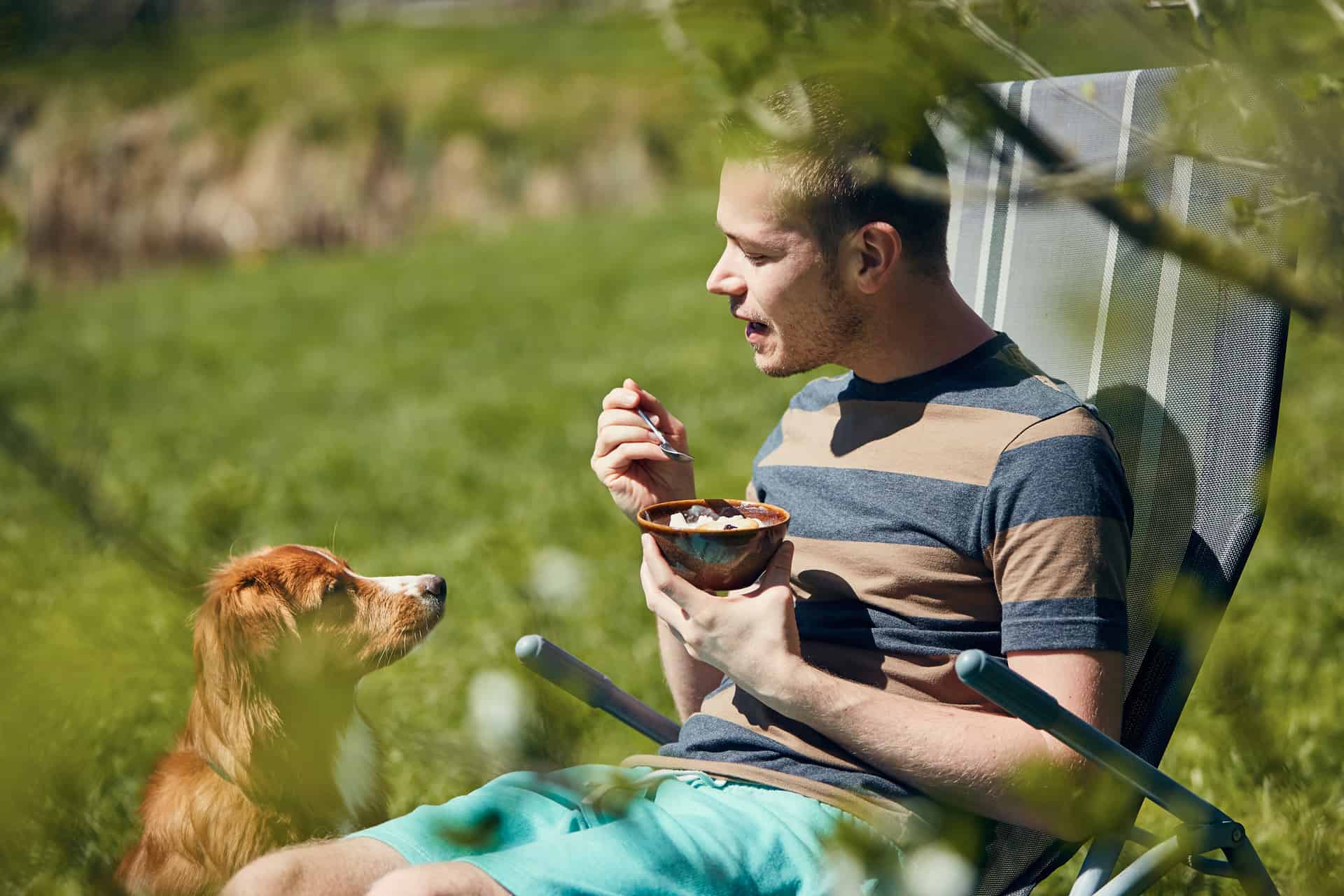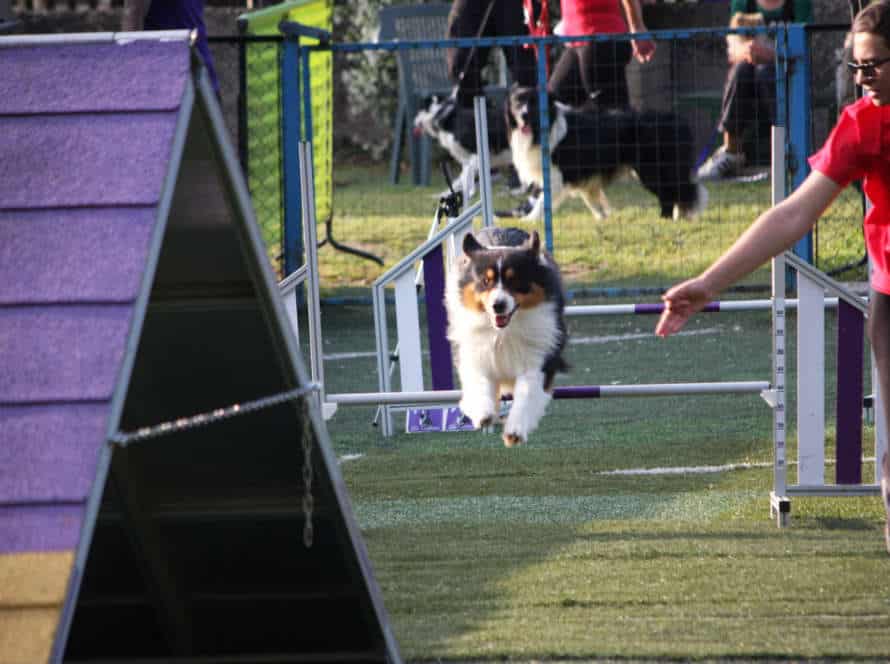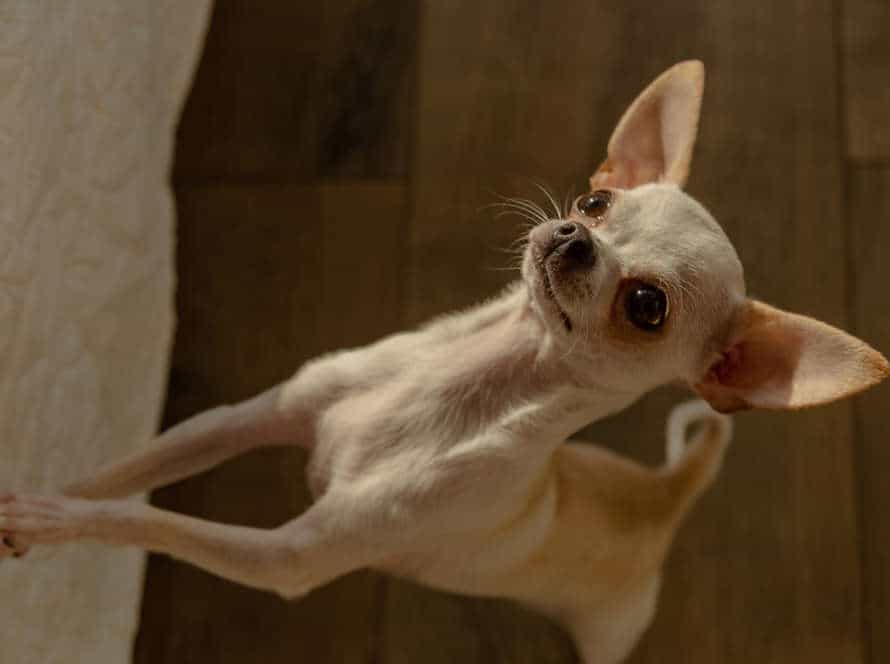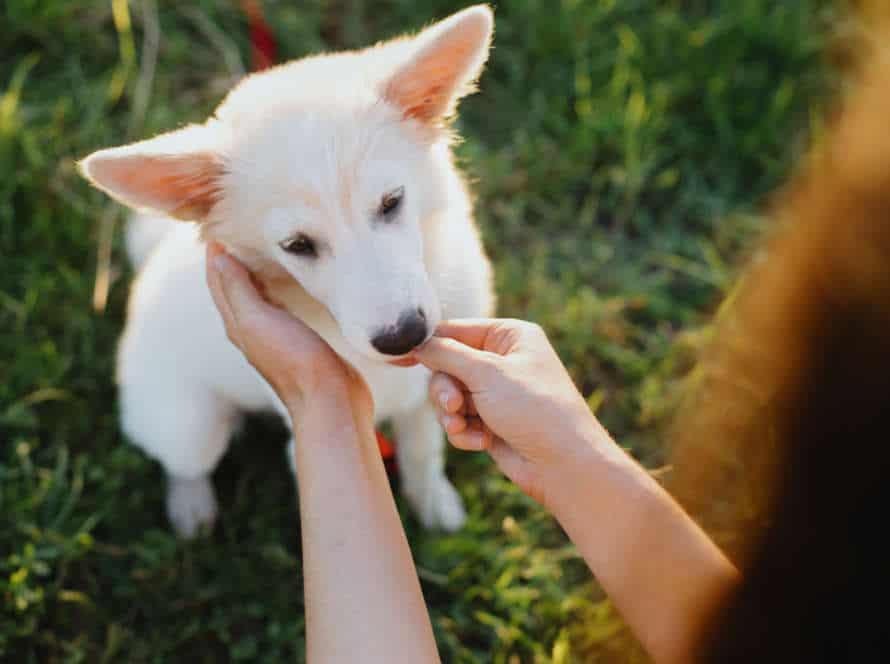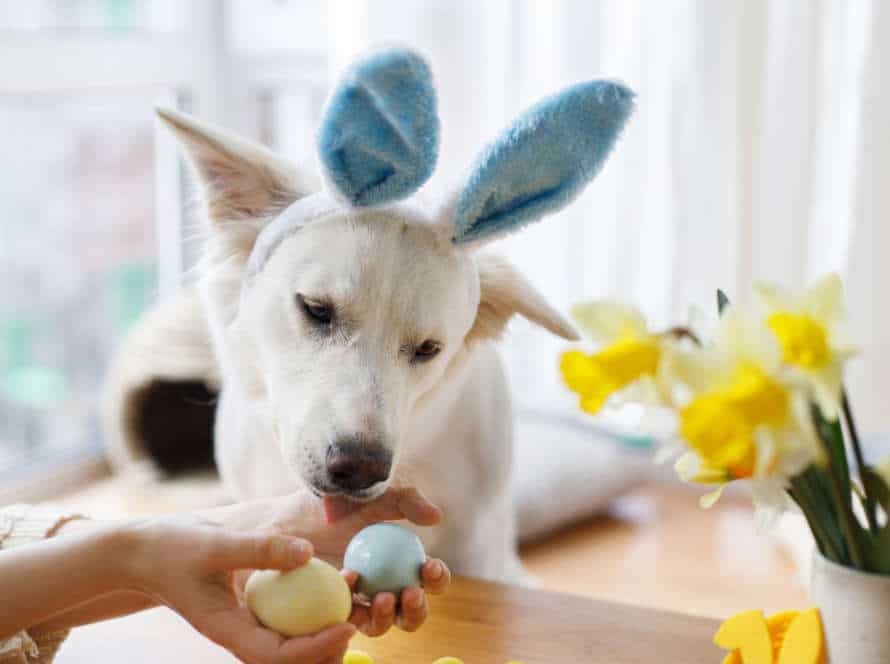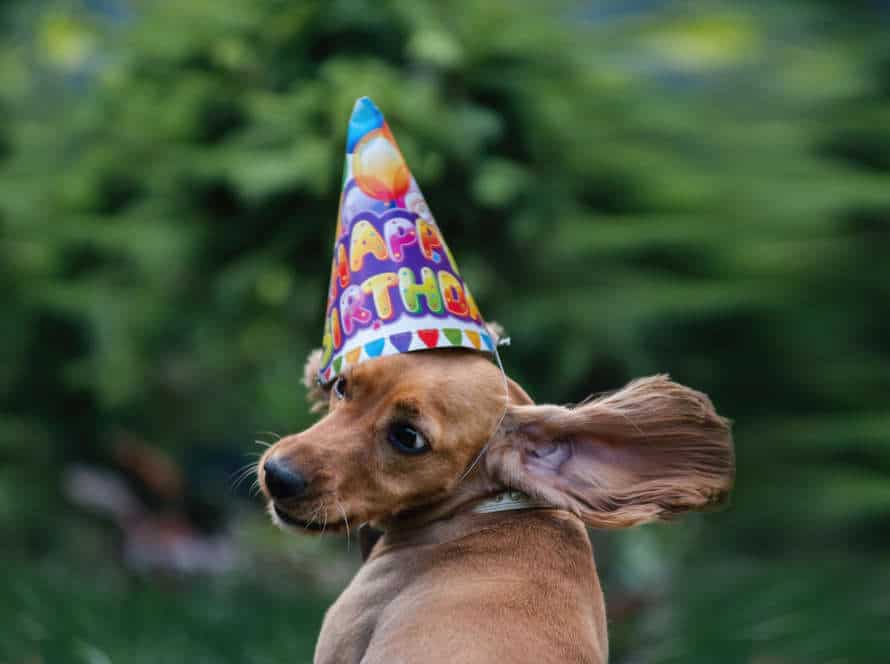Trick Training for Obedience: Reinforce Good Behavior
Reinforce good behaviors with trick training for obedience! Here are some tips:
- Positive Reinforcement: Give treats or verbal praise when your pet does a good behavior or trick. This encourages them to repeat the behavior, and strengthens the bond between you.
- Consistency: Give consistent rewards and reinforce the same behavior.
- Timing: Timing is important. Reward your pet immediately when they do something good.
- Gradual Progression: Increase the difficulty of the tricks as your pet gets better. This way, they learn new tricks in a fun way.
Remember, trick training isn’t only about teaching new tricks. It’s about reinforcing good behaviors and strengthening the bond. Pro tip: Always stay positive and patient with your pet during training.
Understanding the Importance of Trick Training for Obedience
Trick training for dogs is awesome! It strengthens the connection between you and your pup. Plus, it teaches obedience and gives them mental stimulation. Trick training also boosts their confidence when responding to commands. It’s an excellent way to reinforce good behavior and teach obedience.
Let’s investigate the importance and benefits of trick training for obedience.
Psychology behind Trick Training for Obedience
Trick training isn’t just fun. It’s a great way to build a stronger bond with your pet. Plus, it reinforces positive behavior.
The psychology behind it is simple: animals love positive reinforcement. Rewards and praise help create a good link between a behavior and its reward. This encourages the pet to keep up the desired behavior, even after training is over.
It also helps pets understand commands better, leading to better obedience.
So, trick training builds a positive and happy environment, reinforces positive behavior, and makes everyday obedience better. Pro Tip: Always use positive reinforcement when trick training for a healthy relationship.
Benefits of Trick Training for Obedience
Trick training is a fun & useful way to show your pet good behaviour. It can lead to better obedience. Here are benefits of trick training for obedience:
- Reinforces good behaviour: Dogs like to make their owners happy. Trick training gives positive reinforcement when they do good. This encourages them to do it again.
- Improves communication: Trick training helps you talk to your pet. This builds a relationship based on trust and respect.
- Mental stimulation: Trick training keeps your pet’s brain busy. This stops boredom and bad behaviour.
- Increases confidence: As your pet learns new tricks, they will feel more capable. This boosts obedience and behaviour.
Pro-tip: Start easy and make it harder. Be patient and use treats & praise to show good behaviour.
Reinforcing Good Behaviour Through Trick Training
Trick training is a cool and useful way to strengthen good behavior in your dog. It not only teaches obedience, but also helps build trust, communication and confidence between the pup and their owner. Here are some reasons why trick training is so important for obedience:
- Improves the connection between the dog and their owner.
- Allows dogs to learn obedience in an amusing way.
- Stimulates their mind and keeps them from getting bored.
- Boosts a dog’s self-belief and assurance.
When reinforcing decent behavior through trick training, never use physical punishment or negative reinforcement. Instead, concentrate on positive reinforcement methods like treats, compliments, and playtime. Patience, constancy and ending the session with a positive outcome is essential. Pro tip: Trick training is a perfect way to keep your dog’s mind active and have fun together!
Basic Commands for Trick Training
Trick training is an awesome way to teach your pup obedience and reward them for good behavior. It’s enjoyable for your dog and a bonding experience too!
We’ll look through the basic commands you need to get started. Get tips on teaching the commands, and rewards like treats, accolades, and praise.
Teaching Sit and Stay
Train your dog to “Sit” and “Stay”! These commands are useful for trick training, and also help reinforce good behavior.
To teach “Sit”, do this:
- Hold a treat near your dog’s nose.
- Move the treat up, so your dog follows with their nose. This should make their butt lower down.
- When their butt is on the ground, say “Sit” and give them the treat.
- Praise them!
For “Stay”:
- Make sure your dog is in the “Sit” position.
- Show them your flat hand, and say “Stay”.
- Step away from your dog for a few seconds, then return and reward them.
- Increase the time of “Stay” each time you practice.
Be sure to keep training sessions short and reward good behavior. With practice and patience, your dog will learn these commands!
Teaching Down and Come
Teaching your furry friend the essential commands of ‘Down‘ and ‘Come‘ is vital for any dog owner. Whether training for obedience or tricks, here are some steps to help:
- Down: Start in a distraction-free space with a leash. Hold a treat near your dog’s nose and lower it towards the ground. As they follow the treat, their elbows will lower until they lie down. Say “down” and give them the treat and praise.
- Come: Begin in a quiet area with a leash. Take a few steps away while pulling the leash towards you. Cheerfully say “come” and reward with a treat and praise. Increase the distance and distractions as your pup gets better.
Positive reinforcement is key. Reward your furry friend with treats and praise for a job well done!
Teaching Heel and Watch Me
Heel and Watch Me are key commands for teaching tricks and reinforcing good behavior in your pup.
Heel: Teach your pup to heel by holding the leash firmly and walking forward. Encourage your pup to stay alongside you. Reward them with treats when they obey. As they get better, give fewer treats, using verbal praise instead.
Watch Me: Hold a treat near your face. Wait for your pup to look at you. Give them the treat and verbal praise when they do. Repeat this often, until your pup responds to the verbal command “Watch Me” without the treat.
These commands are vital for building a strong bond between you and your pup, and for having a well-behaved pet.
Advanced Trick Training
Trying out advanced trick training is a great way to aid your pooch in learning new behaviors. Plus, it helps reinforce good habits and creates a strong connection between you and your pup. With the right amount of patience, commitment, and positive reinforcement, advanced trick training can make your dog more obedient and better behaved. Let’s dive in and look at what goes into advanced trick training and how it can benefit you and your four-legged friend.
Teaching Roll Over and Play Dead
Teaching your pooch to roll over and play dead is a fun and impressive trick – one that can also help promote good behavior and obedience. To do this, try this step-by-step method:
- Start with your dog in a down position.
- Hold a treat close to their nose. Then, move it in a circular motion towards their shoulder.
- The pup will follow the treat, and roll onto their side.
- Say “roll over” and give them the treat for a reward.
- Repeat this process a few times, saying the verbal cue before giving the treat.
- Once they have mastered rolling over, you can teach them how to “play dead” using a similar technique to get them to lie flat on their side.
Make sure to reward your pup with praise and treats during the training, to reinforce good behavior and obedience.
Teaching Shake Hands and High Five
Training your pup to shake hands and high five is a good way to increase their obedience and promote good behaviour. Follow these steps to use positive reinforcement:
- Shake Hands:
- High Five:
1. Ask your pup to sit.
2. Hold out your hand to their paw and say “shake” or “paw”.
3. Give them a treat when they lift their paw to touch your hand.
4. Keep doing this, slowly replacing the treat with verbal praise and affection.
1. Start with your pup sitting.
2. Put your hand up, palm forward, and say “high five”.
3. Wait for your pup to touch your hand with their paw.
4. Reward them with a treat and verbal praise.
5. Keep repeating, eventually taking away the treats and relying on verbal cues and love to reward good behaviour.
Teaching Crawl and Spin
Teaching your pooch fancy tricks, like ‘crawl’ and ‘spin’, is a fab way to strengthen good behavior and obedience. Here are some tips for training advanced tricks:
For ‘crawl’:
- Begin with teaching your dog to lie down when commanded.
- Hold a treat near their nose and move it slowly to the ground, so they follow it.
- Say ‘crawl’ and give them the treat as soon as they do it.
- Do this until your dog does it without a treat.
For ‘spin’:
- Stand in front of your pup and show them a treat.
- Gently move the treat in a circle, letting them follow it with their nose.
- Say ‘spin’ and reward them with a treat when they do it.
- Repeat until they can do it without the treat.
Always use positive reinforcement, like treats and praise, while training your pup. With consistency and patience, your pup can easily learn these tricks!
Clicker Training for Trick Training
Clicker training is a form of positive reinforcement that uses “clicks” to signal to your pup that they’ve done something right. Clickers enable your pup to comprehend quickly what is rewarded. As the “click” identifies the desired behavior, clicker training is becoming ever more popular for teaching tricks and obedience.
Let’s learn how to use the clicker to train your pup!
How Clicker Training Works
Clicker training is a great way to teach your pet new tricks! You couple a sound with a treat or reward. This helps your pet understand that when they hear the sound, a reward is coming. It encourages them to repeat the action that resulted in the clicking sound.
Here’s how to do it:
- Find a quiet area where your pet can focus and feel comfortable.
- Click the clicker and give a treat immediately. Do this several times until your pet gets the idea.
- When your pet does the behavior you want them to, click and give them a treat right away.
- Do this daily till they always do the behavior when they hear the click.
- Gradually add verbal cues, and reduce the treats while still clicking and giving rewards when they behave well.
Clicker training strengthens the bond between you and your pet. It also reinforces positive behavior, resulting in an obedient and well-behaved pet!
Advantages of Using Clicker Training for Trick Training
Clicker training is a great way to teach tricks to your pet. It has many advantages over traditional methods. For example, it offers precise timing, so you can mark when your pet does something right. Plus, it’s positive reinforcement – the clicking sound rewards good behavior and encourages them to repeat it. Lastly, it’s versatile – works on all kinds of pets from dogs to birds!
Pro Tip: To be successful with clicker training, you need patience and consistency. Start with easy tricks and build up difficulty as your pet gets used to it.
Clicker Training for Basic and Advanced Tricks
Clicker training is a great way to train your pup, from basic to advanced tricks. Click your device, give treats and positive reinforcement – this will help your doggo learn. Here are some tips for successful clicker training:
- Start with easy commands like “sit” and “stay“.
- Use a word or sound like “good” or “yes” to mark desired behavior. Follow this with treats or a reward.
- Keep the training sessions short and regular – no boredom or stress.
- Start in a quiet place with no distractions, then slowly add more as your pup gets better.
- Always reward good results – no punishment.
With patience and consistency, clicker training is a fun and rewarding experience for you and your pup.
Troubleshooting Common Issues During Trick Training
Training a pup can be tricky! Problems can arise when teaching them tricks and obedience. Let’s examine some common issues and how to solve them. Get your pup learning effectively with these troubleshooting tips.
Inconsistent Results
Trick training can have mixed results due to lots of causes. These are the most common:
- Motivation lacking? Make it more fun with rewards like treats or toys. Or go to a new place and try something different.
- Not responding? Make sure your words and body movements are the same each time.
- Not reinforcing good behaviour? Be sure to give praise, treats or toys consistently.
Remember, trick training should be enjoyable for both you and your pet. If results are inconsistent, take a break, sort out the issue and reward good behaviour.
Disinterest in Trick Training
Dogs may not show interest in trick training. It could be due to different things. Here are some common causes and tips to try.
- Low engagement? Make the training fun with treats, toys and positive reinforcement.
- Confused? Break down the trick into easy steps. Use visuals and verbal commands to communicate.
- Tired? Keep sessions short and frequent.
- Uncomfortable? Check if your pup is hurting and address any issues.
- Unmotivated? Use tasty treats and rewards to motivate them.
- Remember- trick training can be an enjoyable bonding experience. Plus, it increases obedience and strengthens your relationship. Pro Tip- use creative ways to involve your dog. If they don’t show interest in training for a long time, get help from a professional.
Slow Progress in Learning Advanced Tricks.
If your pup is stalling on advanced tricks during obedience training, it’s time to tackle common issues. Here are some common issues and solutions for a successful trick training experience:
- Start Small: If they’re having trouble mastering advanced tricks, it’s best to go back to basics. Reinforce commands like “sit,” “stay,” and “come” for a strong foundation.
- Inconsistent Behavior: Inconsistent behavior and reinforcement from the trainer can be a major issue. Train your pup everyday and give consistent reinforcement for good behavior.
- Inappropriate Reinforcement: Motivation could be unsuitable for your dog. Use positive reinforcement like treats or verbal praise instead of fear or punishment.
- Concentration Difficulties: If your pup is distracted, try a quieter environment with fewer distractions. Don’t train when they’re over-excited or tired.
Pro Tip: Trick training should be fun and a great way to bond with your pup!
Frequently Asked Questions
Q: What is trick training for obedience?
A: Trick training for obedience is a training method that uses positive reinforcement to teach your dog good behavior. It involves rewarding your dog for performing specific commands or tricks, rather than punishing them for bad behavior.
Q: How can I reinforce good behavior in my dog?
A: You can reinforce good behavior in your dog by using treats, praise, and positive feedback when they perform a desired behavior. For example, if your dog sits when you ask them to, reward them with a treat and verbal praise.
Q: What are some tricks I can teach my dog?
A: Some tricks you can teach your dog include sit, stay, come, roll over, shake, and play dead. You can also teach your dog more advanced tricks like weaving through cones or jumping through hoops.
Q: How long does it take to train a dog to do tricks?
A: The length of time it takes to train a dog to do tricks depends on the individual dog and their learning ability. Some dogs may learn quickly, while others may take more time and repetition. It is important to be patient and consistent with your training.
Q: Can older dogs still learn new tricks?
A: Yes, older dogs can still learn new tricks! While it may take more time and patience, older dogs can benefit from continued training and learning new skills. Trick training can also help keep older dogs mentally stimulated and engaged.
Q: What are the benefits of trick training for obedience?
A: Trick training for obedience can help strengthen the bond between you and your dog, improve your dog’s overall behavior, increase their confidence and mental stimulation, and provide a fun and positive way to interact with your pet.

